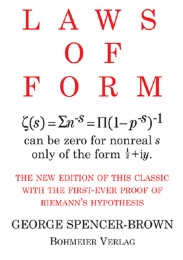Detailansicht
Laws of Form
The New Edition of this Classic with the first-ever Proof of Riemann's Hypothesis
ISBN/EAN: 9783890945804
Umbreit-Nr.: 1900172
Sprache:
Englisch
Umfang: 240 S.
Format in cm: 1.3 x 21.1 x 14.8
Einband:
kartoniertes Buch
Lesealter: 12-99 J.
Erschienen am 01.04.2010
€ 25,00
(inklusive MwSt.)
Nachfragen
